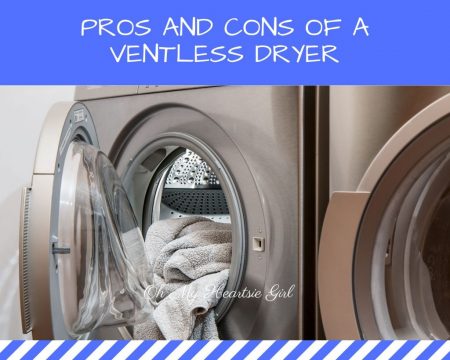 Can you imagine what your life would be like without a washer or dryer? The thought of having to manually wash, beat, strain and air dry clothes is physically exhausting. Not only would it add hours of additional work to your weekly schedule, but it would also mean that your clothes wouldn’t come out as soft and fluffy as they typically do when you use a dryer. Luckily, the US Department of Energy says that about 80% of American households are equipped with a clothes dryer in their home.
Can you imagine what your life would be like without a washer or dryer? The thought of having to manually wash, beat, strain and air dry clothes is physically exhausting. Not only would it add hours of additional work to your weekly schedule, but it would also mean that your clothes wouldn’t come out as soft and fluffy as they typically do when you use a dryer. Luckily, the US Department of Energy says that about 80% of American households are equipped with a clothes dryer in their home.
The two main types of dryers are powered by either gas or electric whereby the moisture that is rung out of your clothes is expelled to the outdoors, in other words, outdoor vents. There is another option, however, it is to have a ventless dryer that can be a good fit under the right circumstances. If you’re on the fence about whether or not a ventless dryer would be the right fit for you, we’ll lay out a few pros and cons for you to consider.
First off, what is a ventless dryer?
A ventless dryer is one that comes with no outdoor ventilation system for humidity and moisture to escape to. A ventless dryer system comes in one of two ways:
Condenser dryer – this is by far the more common of the two systems. Essentially, instead of allowing the heat to escape through a hose to the outdoors, the dryer will draw in cooler air causing the warmer, humid air to drop in temperature and convert to a liquid form where it gets stored in a storage tray that can easily be emptied once the full cycle is complete.
Heat pump dryer – although this system is not as readily available, it has been increasing in popularity because of its efficiency at drying out clothes. The main difference is that this unit does not carry a condenser, instead, a pump continuously circulates hot air throughout the drum. It’s an easier process mechanically.
As previously stated, ventless dryers are not for every situation and are better for some scenarios, here are a few reasons why you might want to consider a ventless over a vented dryer:
Size – the ventless dryer is much smaller in size than its counterpart so you will usually find this type of unit in much smaller homes. Typically smaller condos or living quarters that are very tight would be a good fit for a ventless dryer. Many European countries opt for the ventless system because it takes up less space.
Quick set-up – these dryers are really plug-n-play ready, meaning that all you have to do is plug them in and start using them. There is no need for installation or cutting holes into the walls because everything is contained within them. You can be up and running in under a minute!
Efficiency – the energy output on a ventless dryer is much less, meaning that your energy bills will be lower. This is because you aren’t really creating hot air, you’re just circulating the hot air that already exists in the dryer itself.
Your clothes – you’ll notice tighter, longer-lasting clothing since the drum is much smaller and the volume of heat is lower than a conventional dryer.
Arguments against ventless dryers:
Size/Capacity – it’s no secret that ventless dryers are much smaller in size and, therefore, hold much smaller load capacity. This is the reason that it is much more favorable for those with smaller living quarters.
Cost – the upfront cost of a ventless dryer is much greater than one that is vented, and although you’ll save on energy costs, the savings will come gradually and over time. Ventless dryers usually come with less downtime, but if you experience maintenance issues you’ll have to search a little harder to find a dryer repair company that will service them. You should also expect your repair costs to be a little more costly than a vented dryer.
Increased Moisture – since the heat is recycled in a ventless dryer vs released as in a vented dryer, the amount of humidity and moisture around the dryer will collect and build quicker, there is a higher probability of mold and mildew. You’ll want to ensure that the area around the dryer doesn’t encourage mold growth, nor the collection of moisture.
As you can see, a ventless dryer has its pros and cons and definitely isn’t meant for every circumstance or family. You’ll want to think about your particular circumstances and see if a ventless dryer makes financial and logistical sense to install in your home.
Pros And Cons Of A Ventless Dryer
Can you imagine what your life would be like without a washer or dryer? The thought of having to manually wash, beat, strain and air dry clothes is mentally exhausting and would surely be physically exhausting as well. Not only would it add hours of additional work to your weekly schedule, but it would also mean that your clothes wouldn’t come out as soft and fluffy as they typically do when putting through a dryer. Luckily, the US Department of Energy says that about 80% of American households are equipped with a clothes dryer in their home.
The two main types of dryers are powered by either gas or electric whereby the moisture that is rung out of your clothes is expelled to the outdoors, in other words, outdoor vents. There is another option, however, to have a ventless dryer that can be a good fit under the right circumstances. If you’re on the fence about whether or not a ventless dryer would be the right fit for you, we’ll lay out a few pros and cons for you to consider.
First off, what is a ventless dryer?
A ventless dryer is one that comes with no outdoor ventilation system for humidity and moisture to escape to. A ventless dryer system comes in one of two ways:
Condenser dryer – this is by far the more common of the two systems. Essentially, instead of allowing the heat to escape through a hose to the outdoors, the dryer will draw in cooler air causing the warmer, humid air to drop in temperature and convert to the liquid form where it gets stored in a storage tray that can easily be emptied once the full cycle is complete.
Heat pump dryer – although this system is not as readily available, it has been increasing in popularity because of its efficiency at drying out clothes. The main difference is that this unit does not carry a condenser, instead, a pump continuously circulates hot air throughout the drum. It’s an easier process mechanically.
As previously stated, ventless dryers are not for every situation and are better for some scenarios, here are a few reasons why you might want to consider a ventless over a vented dryer:
Size – the ventless dryer is much smaller in size than its counterpart so you can usually find this type of unit in much smaller units. Typically smaller condos or living quarters that are very tight would be a good fit for a ventless dryer. Many European countries opt for the ventless system because it takes up less space.
Quick set-up – these dryers are really plug-n-play ready, meaning that all you have to do is plug them in and start using them. There is no need for installation or cutting holes into the walls because everything is contained within them. You can be up and running in under a minute!
Efficiency – the energy output on a ventless dryer is much less meaning that your bills will be lower. Since you aren’t really creating hot air, you’re circulating the hot air that already exists in the dryer itself.
Your clothes – you’ll notice tighter, longer-lasting clothing since the drum is much smaller and the volume of heat is lower than a conventional dryer.
Arguments against ventless dryers:
Size/Capacity – it’s no secret that ventless dryers are much smaller in size and, therefore, hold much smaller load capacity. This is the reason that it is much more favorable for those with smaller living quarters.
Cost – the upfront cost of a ventless dryer is much greater than one that is vented, and although you’ll save on energy costs, the savings will come gradually and over time. Ventless dryers usually come with less downtime, but yet you can find a dryer repair company that doesn’t serve them, therefore, repair costs could be more costly than a vented dryer.
Increased Moisture – since the heat is recycled in a ventless dryer vs released as in a vented dryer, the amount of humidity and moisture around the dryer will collect and build quicker, therefore you may have a higher probability of mold and mildew. You’ll want to ensure that the area around the dryer doesn’t encourage mold growth, nor the collection of moisture.
As you can see, a ventless dryer has its pros and cons and definitely isn’t meant for every circumstance or family. You’ll want to think about your particular circumstances and see if a ventless dryer makes financial and logistical sense.
[…]
6 Ways to Save Money Redesigning your Kitchen
This post may contain automatically and manually added affiliate links, which means I might receive a small commission if you make a purchase using a link at no extra cost to you.


